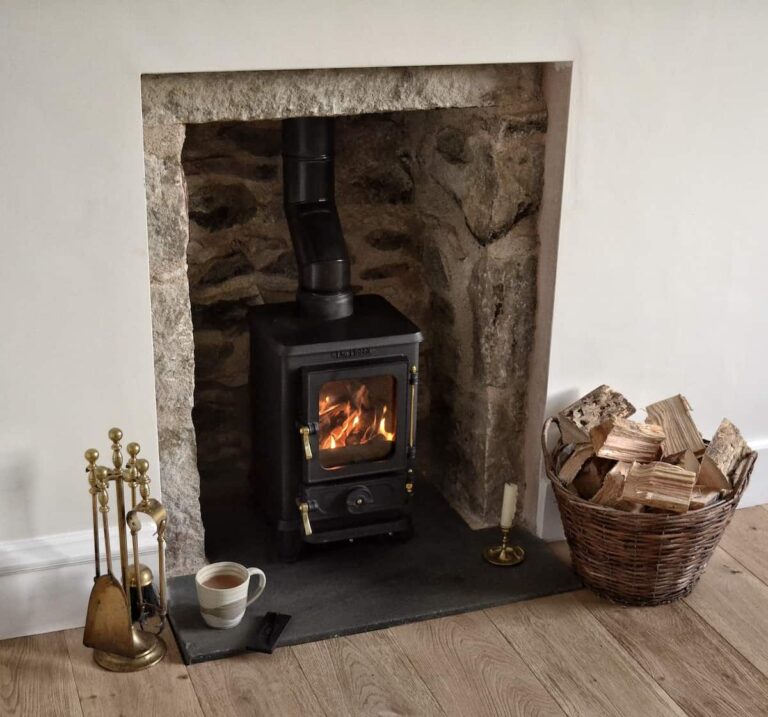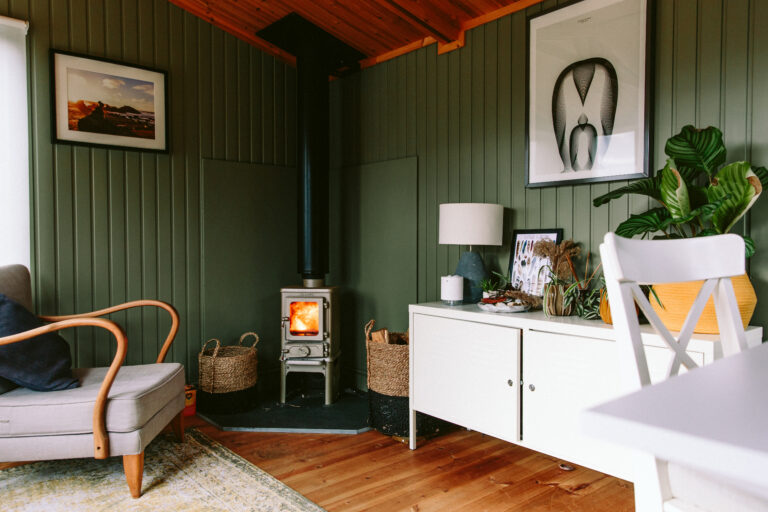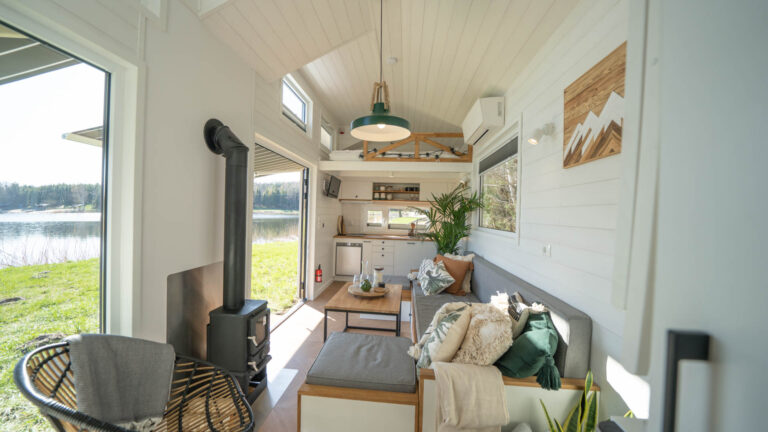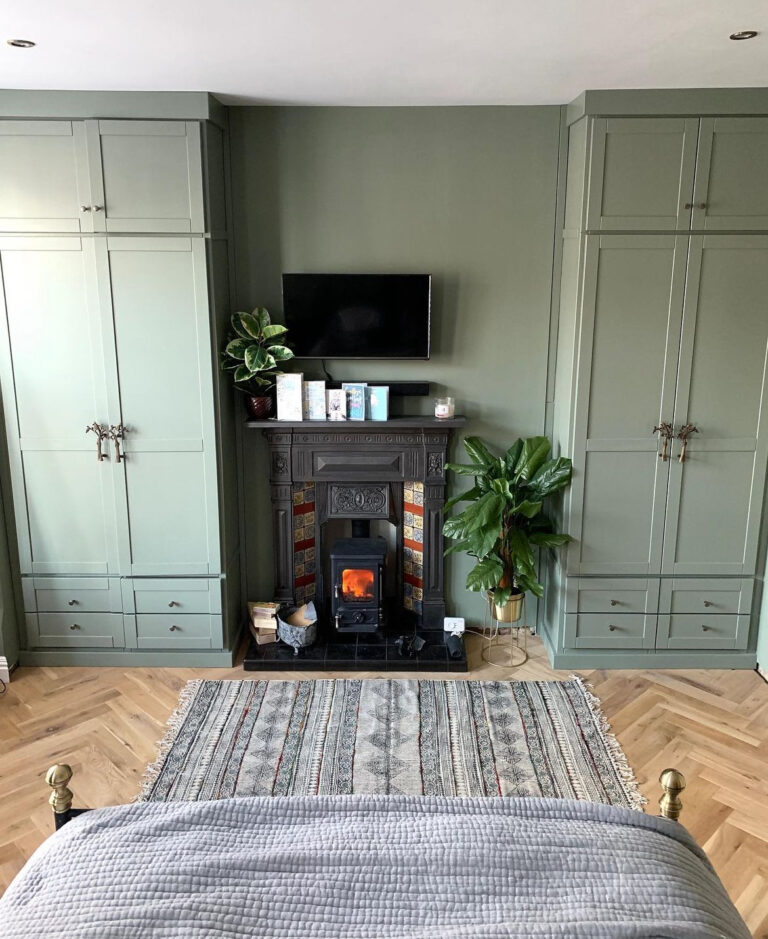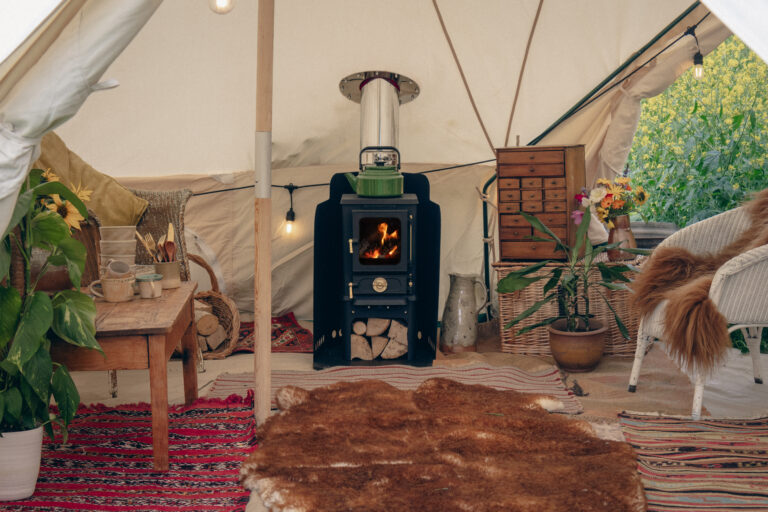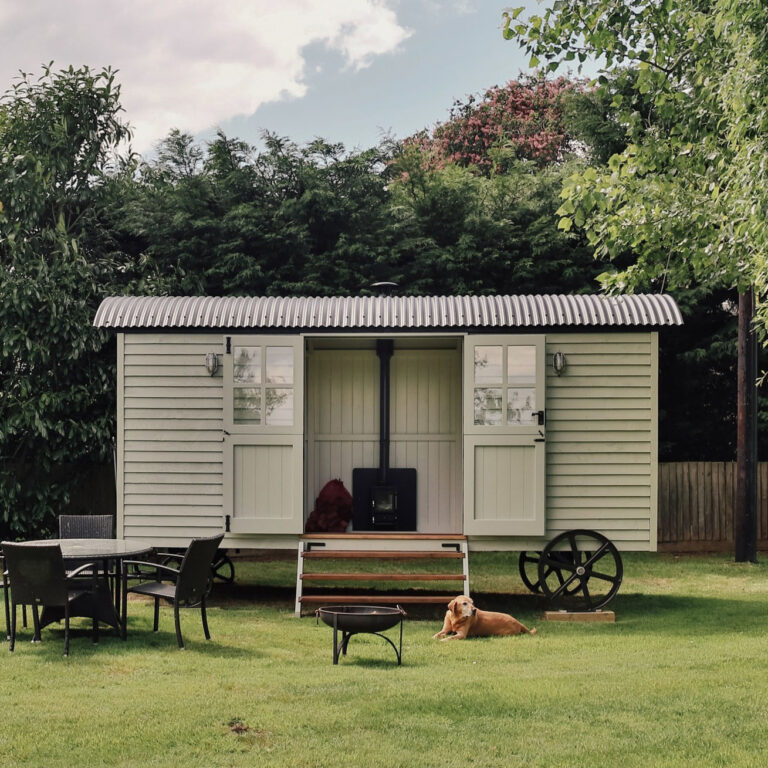Installing a Wood Burning Stove into a Canal Boat – a Complete Guide
This is a complete guide on installing a wood burning stove into a canal boat. In recent years the advice and guidelines for installing wood burning stoves on canal boats and narrowboats has beneficially tightened up. Adopting the new guidelines results in safer stove installations and more efficient stove running. The new directives have moved away from using the traditional uninsulated 4” steel pipe which was welded up and passed through the deck and outside in favour of using sectional twin wall insulated flue pipe. This type of insulated flue is much safer when passed through the cabin and roof of the boat. Outside and inside the flue gases are kept warmer providing a better draw, more efficient burning which in turn produces much fewer soot deposits and therefore reduces flue and stove maintenance.
Here are links to the current guidance.
Read the Soliftec guide stoves on boats.
The Advantages of Using a Twin Wall Flue System
Installing a wood burning stove into a canal boat with an insulated flue results in the flue gases staying much warmer which in turn both reduces the level of deposit build up and maintains an effective draw. With canal boat flue heights being quite low in comparison to a house for example, it is important to maximise the elements to enhance the draw as much as possible. The flue is basically like the engine which runs the stove. A poor performing engine or draw will result in a poor performing stove that soots up regularly. A twin wall flue is therefore a good choice.
How to Install Your Small Stove and Flue Kit Into a Canal Boat
We have designed three canal boat flue kits, which are within the new guidelines but also aesthetically more pleasing as the external flue diameter is still only 152mm.
The main component to our canal boat flue kits is the deck fitting kit. This includes 3 cast iron deck rings – 2 of these are tapered and can be rotated to match the pitch of the deck. A support flange which can be positioned either way up to aid the installation and can be sandwiched between 2 of the cast iron rings. This piece will add support to the flue pipe as you can add 3 self tapping screws to secure it to the twin wall pipe that passes through it. A collar placed over the top to neaten and add additional weatherproofing, and a trim plate on the inside.
This whole setup creates an extremely solid and weatherproof structure for the flue to pass through. There will be a removable section of flue on the outside, which when removed can be replaced with a closure cap.
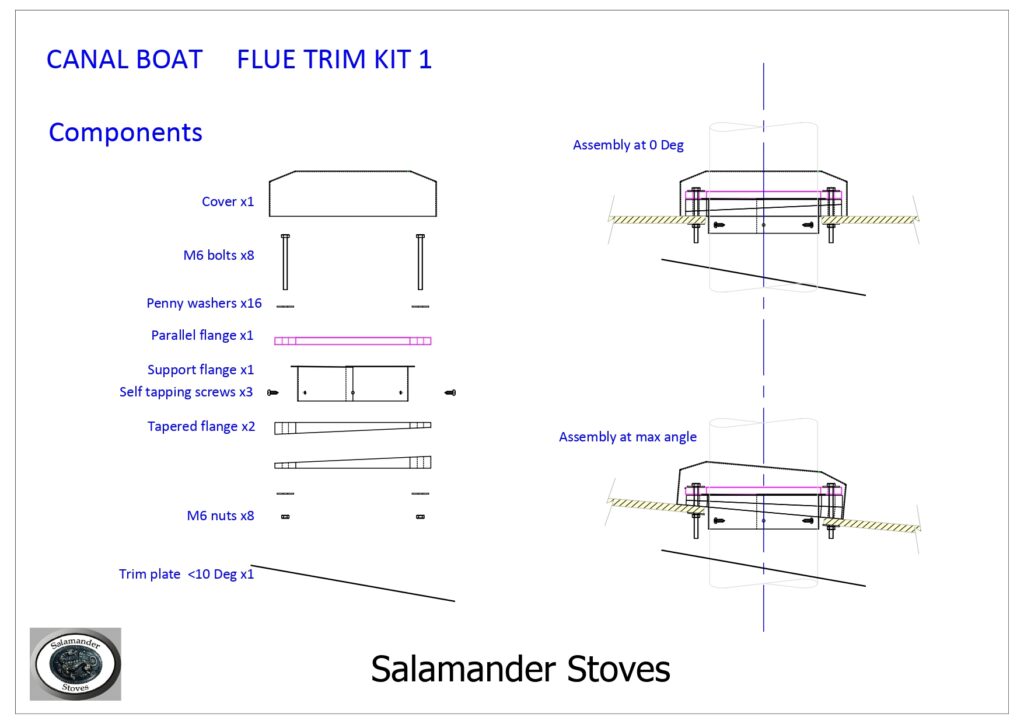
Important Points to Consider for Installation
- Single Wall requires 3x it’s diameter to combustibles and 1.5x it’s diameter to shielded combustibles
- Twin Wall requires 50mm/2” clearance to combustibles so the hole to cut through any combustible materials should be 100mm/4” larger overall in diameter than the external diameter of the twin wall pipe. Therefore a 10” hole should be cut through combustibles – the trim plate will then cover this excess hole up
- If you have a non-combustible material (steel deck) that the flue pipe is to pass through then this can be the same diameter as the pipe (6”), but we would recommend making it very slightly larger so you do not scratch the flue pipe when installing it
- Wall Shielding can be done in 2 ways: Vermiculite shielding 25mm thick on a 12mm airgap on spacers or 1.5mm metal shield on a 25mm air gap on spacers
- If you add shielding to the wall then we would recommend extending this to at least 200mm above the height of the stove to protect the wall from the heat coming from the top of the stove. You may need to increase further if using single wall
- The hearth should be 12mm thick and protrude 225mm in front of the stove.

